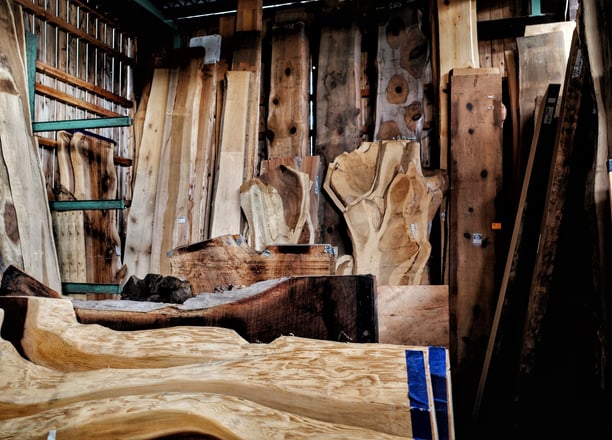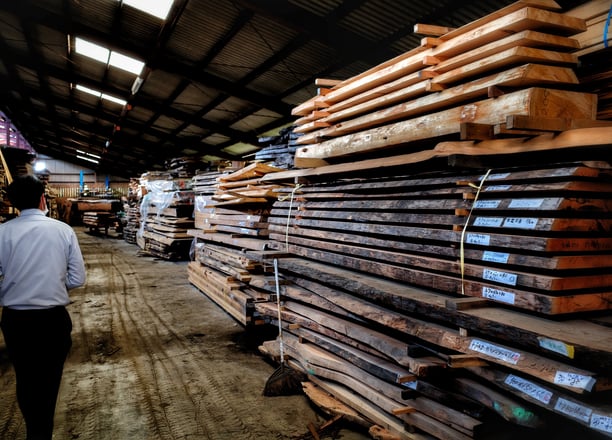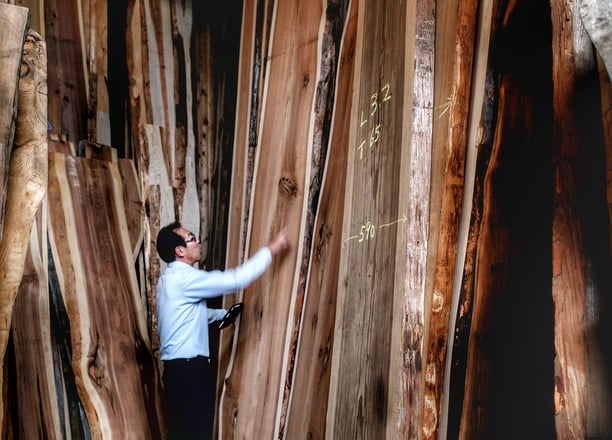Keyaki - Japanese Zelkova (Zelkova serrata)
A strong and dense hardwood, Japanese zelkova is often compared to elm due to its excellent resistance to splitting and warping. It plays a crucial role in traditional Japanese architecture, commonly found in temples, structural beams, and fine furniture. The rich reddish-brown hue and striking grain pattern contribute to its popularity in high-end joinery and cabinetry.
Akamatsu - Japanese Red Pine (Pinus densiflora)
Japanese red pine is valued for its durability, natural resistance to decay, and warm reddish-brown heartwood, making it a key material in traditional and modern construction. It is often used for structural elements in temples, shrines, and traditional homes, as well as for interior paneling and flooring. Its straight grain and ease of processing also make it suitable for shipbuilding and bridges.
Karamatsu - Japanese Larch (Larix kaempferi)
Known for its strength and durability, Japanese larch is widely used in structural applications such as beams, exterior cladding, and posts. Its natural resistance to moisture and decay makes it a fine choice for outdoor projects, including railway ties, bridges, and landscaping elements. With a distinctive reddish-brown heartwood and fine grain, it provides both functional and aesthetic value.
Shirakanba - Japanese White Birch (Betula platyphylla var. japonica)
Distinguished by its smooth, pale bark and fine, even grain, Japanese white birch is a preferred choice for interior paneling, furniture, and flooring. This light-colored wood offers a modern aesthetic, complementing minimalist and Scandinavian-style interiors. While not as decay-resistant as some other species, it is valued for its workability and ability to take finishes well.
Toneri-ko - Japanese Ash (Fraxinus spaethiana)
Japanese ash is prized for its strength, elasticity, and attractive grain pattern, making it a preferred material for furniture, flooring, and tool handles. It has a dense, durable structure that resists wear, similar to other ash species, and is often used in sports equipment like baseball bats. Its bold grain and ability to absorb stains effectively allow it to be featured in high-end interior woodworking.
Irohamomiji - Japanese Maple (Acer palmatum)
Japanese maple is a fine-textured hardwood known for its smooth grain and excellent workability. Though not a primary choice for large-scale construction, it excels in decorative woodworking, intricate carvings, and high-quality veneer. Craftsmen appreciate its stability and refined aesthetic, making it a sought-after material for specialty furniture and artistic applications.
Yamazakura - Japanese Cherry (Prunus serrulata)
Japanese cherry, best known for its ornamental beauty, produces a fine, richly colored hardwood with a smooth texture and high polishability. Though not widely used in large-scale construction, it is highly prized for cabinetry, fine furniture, and decorative woodwork. Its deep reddish-brown color darkens over time, enhancing its luxurious appeal in artisanal craftsmanship.
Other Japanese Species






We also have the network to source lesser known Japanese species that can be transformed into stunning architectural pieces. Don’t hesitate to reach out to us if you are interested in any of the species below:

